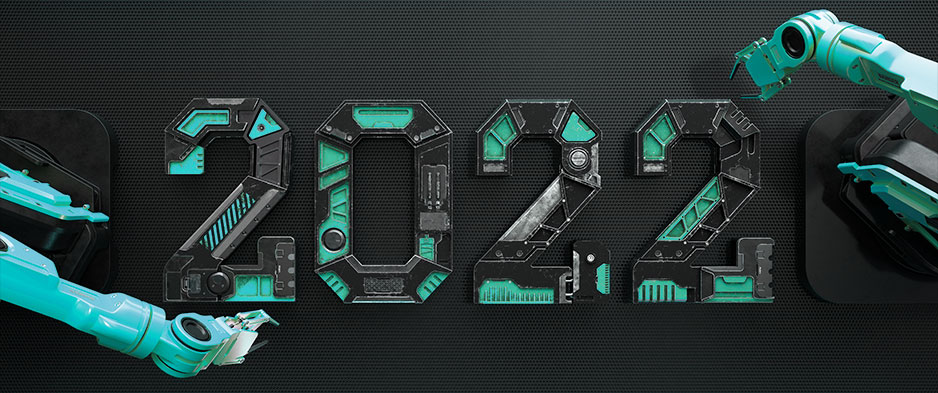Though manufacturing took a hit between 2020 and 2021, the global pandemic hasn’t stopped innovation. The new context has in fact reshaped industrial automation and the way we work in general. As a result, new needs, goals, and trends have emerged.
From environmental concerns to cyber security and the implementation of advanced machinery and intelligent systems, these are the main trends in industrial automation in 2022.
Growth of predictive maintenance
2022 sees a further increase in the need for effective and timely predictive maintenance systems. The ability to plan repair programs in advance, to identify and recognize anomalies, and to take preventive action is more essential than ever. Hence the growing need to collect production data from every single industrial process.
For this reason, more and more sensors are integrated into automated production. In this way, the machines can evaluate their status and provide instant feedback. In the event of a malfunction, a maintenance request is automatically generated before the problem reaches a critical state. For example, we know exactly the state of a machine or engine, when and how it could fail and, therefore, when it will be necessary to intervene or order a spare part. In some cases, the machines themselves carry out their own maintenance.
This translates into a reduction in times and line downtime situations, with relative containment of costs and losses.
Greater focus on cyber security
With the increase in connected machinery, the complexity of industrial software, and the volume of sensitive data in circulation, threats also increase. Facilities are more vulnerable to cyber-attacks, with high risks of damage to production, reputation and customers.
One of the goals of industrial automation in 2022 will be a greater focus on cyber security. Starting with raising awareness at every level of the company on the issue of safety and how this is a shared responsibility. Today, everyone plays a role in preventing such threats, and companies must invest in training their employees on the risks to reduce the possibility of a security incident. This goes hand in hand with the implementation of increasingly effective and innovative IT security solutions and plans.
More investments in sustainable production
Energy efficiency, zero emissions, climate neutrality. These are just some of the issues falling within the concept of sustainable production which is one of the priorities of industrial automation in 2022.
Driven by consumer purchasing habits, companies – often in collaboration with government initiatives – are asked to take their environmental responsibilities seriously. In particular, they must consider the total life cycle of the production process, of the resources and raw materials used, and of the product itself in order to reduce the environment impact as much as possible.
Even the same technological practices of Industry 4.0 thus become aimed at reducing energy consumption and waste production.
Greater diffusion of Digital Twins
In 2022, the need for technologies and solutions that simplify remote work and maintenance is growing. A trend that also manifests itself with a greater diffusion of Digital Twins in industrial automation.
The advantages include a significant reduction in maintenance costs, machine downtime and technical defects. This technology represents a new milestone for augmented reality, with the possibility for manufacturers to monitor their activities in real time and to act in a preventive manner. As? For example, by connecting a Digital Twin to the sensors of a machine to view its parameters during operations and report any anomalies or failures.

